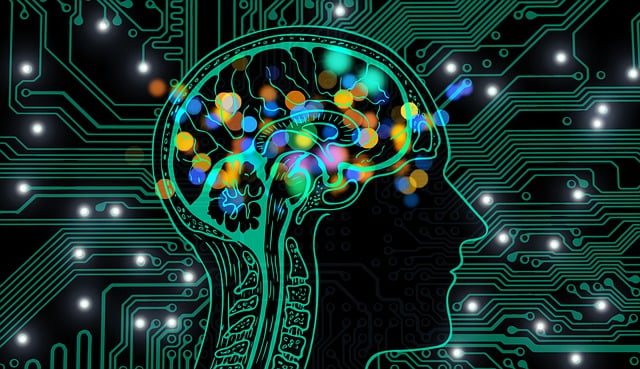Deep belief networks are a class of deep neural networks algorithms that are modeled after the human brain, giving them a greater ability to recognize patterns and process complex information. In this article, we will discuss different types of deep neural networks, examine deep belief networks in detail and elaborate on their applications. Nothing in nature compares to the complex information processing and pattern recognition abilities of our brains. In our quest to advance technology, we are now developing algorithms that mimic the network of our brains, these are called deep neural networks.
Deep neural networks have a unique structure because they have a relatively large and complex hidden component between the input and output layers. To be considered a deep neural network, this hidden component must contain at least two layers.

Deep Neural Network Structure
A weight is assigned to each connection from one node to another, signifying the strength of the connection between the two nodes. A weighted sum of all the connections to a specific node is computed and converted to a number between zero and one by an activation function. The result is then passed on to the next node in the network.
This process continues until the output nodes are reached. The output nodes are categories, such as cats, zebras or cars. As the model learns, the weights between the connection are continuously updated.
Because of their structure, deep neural networks have a greater ability to recognize patterns than shallow networks. Deep neural networks classify data based on certain inputs after being trained with labeled data. Meaning, they can learn by being exposed to examples without having to be programmed with explicit rules for every task.
For example, if we want to build a model that will identify cat pictures, we can train the model by exposing it to labeled pictures of cats. Over time, the model will learn to identify the generic features of cats, such as pointy ears, the general shape, and tail, and it will be able to identify an unlabeled cat picture it has never seen.
Types Of Deep Neural Networks
Recurrent Neural Networks
While most deep neural networks are unidirectional, in recurrent neural networks, information can flow in any direction. The nodes in these networks can process information using their memory, meaning they are influenced by past decisions. This renders them especially suitable for tasks such as speech recognition and handwriting recognition.
Convolutional Neural Networks
Convolutional Neural Networks (CNNs) are modeled after the visual cortex in the human brain and are typically used for visual processing tasks. When looking at a picture, they can identify and differentiate the important features of the image by breaking it down into small parts.
CNNs reduce the size of the image without losing the key features, so it can be more easily processed. The hidden layers in a convolutional neural network are called convolutional layers – their filtering ability increases in complexity at each layer. The first convolutional layers identify simple patterns while later layers combine the patterns. You can read this article for more information on the architecture of convolutional neural networks.
What Is a Deep Belief Network?
Deep belief networks are algorithms that use probabilities and unsupervised learning to produce outputs. They are composed of binary latent variables, and they contain both undirected layers and directed layers.
Unlike other models, each layer in deep belief networks learns the entire input. In convolutional neural networks, the first layers only filter inputs for basic features, such as edges, and the later layers recombine all the simple patterns found by the previous layers. Deep belief networks, on the other hand, work globally and regulate each layer in order.
Architecture of deep belief networks

The network is like a stack of Restricted Boltzmann Machines (RBMs), where the nodes in each layer are connected to all the nodes in the previous and subsequent layer. However, unlike RBMs, nodes in a deep belief network do not communicate laterally within their layer. A network of symmetrical weights connect different layers.
The connections in the top layers are undirected and associative memory is formed from the connections between them. The connections in the lower levels are directed. The nodes in the hidden layer fulfill two roles – they act as a hidden layer to nodes that precede it and as visible layers to nodes that succeed it. These nodes identify the correlations in the data.
How do deep belief networks work?
Greedy learning algorithms are used to pre-train deep belief networks. This is a problem-solving approach that involves making the optimal choice at each layer in the sequence, eventually finding a global optimum.
Greedy learning algorithms start from the bottom layer and move up, fine-tuning the generative weights. The learning takes place on a layer-by-layer basis, meaning the layers of the deep belief networks are trained one at a time. Therefore, each layer also receives a different version of the data, and each layer uses the output from the previous layer as their input.
Greedy learning algorithms are used to train deep belief networks because they are quick and efficient. Moreover, they help to optimize the weights at each layer.
Applications Of Deep Belief Networks
Image recognition
Deep belief networks can be used in image recognition. A picture would be the input, and the category the output. This technology has broad applications, ranging from relatively simple tasks like photo organization to critical functions like medical diagnoses. For example, smart microspores that can perform image recognition could be used to classify pathogens. This would alleviate the reliance on rare specialists during serious epidemics, reducing the response time.
Video recognition
Video recognition also uses deep belief networks. Video recognition works similarly to vision, in that it finds meaning in the video data. For example, it can identify an object or a gesture of a person. It can be used in many different fields such as home automation, security and healthcare.
Motion-capture data
Motion capture data involves tracking the movement of objects or people and also uses deep belief networks. Motion capture is tricky because a machine can quickly lose track of, for example, a person – if another person that looks similar enters the frame or if something obstructs their view temporarily. Motion capture thus relies not only on what an object or person look like but also on velocity and distance. Motion capture is widely used in video game development and in filmmaking.






